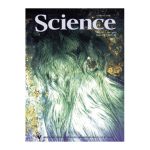Inhibiting stromal cell heparan sulfate synthesis improves stem cell mobilization and enables engraftment without cytotoxic conditioning.
Saez B, Ferraro F, Yusuf RZ, Cook CM, Yu VW, Pardo-Saganta A2, Sykes SM, Palchaudhuri R, Schajnovitz A, Lotinun S, Lymperi S, Mendez-Ferrer S, Toro RD, Day R, Vasic R, Acharya SS, Baron R, Lin CP, Yamaguchi Y, Wagers AJ, Scadden DT.
Abstract
The glycosyltransferase gene, Ext1, is essential for heparan sulfate production. Induced deletion of Ext1 selectively in Mx1-expressing bone marrow (BM) stromal cells, a known population of skeletal stem/progenitor cells, in adult mice resulted in marked changes in hematopoietic stem and progenitor cell (HSPC) localization. HSPC egressed from BM to spleen after Ext1 deletion. This was associated with altered signaling in the stromal cells and with reduced vascular cell adhesion molecule 1 production by them. Further, pharmacologic inhibition of heparan sulfate mobilized qualitatively more potent and quantitatively more HSPC from the BM than granulocyte colony-stimulating factor alone, including in a setting of granulocyte colony-stimulating factor resistance. The reduced presence of endogenous HSPC after Ext1 deletion was associated with engraftment of transfused HSPC without any toxic conditioning of the host. Therefore, inhibiting heparan sulfate production may provide a means for avoiding the toxicities of radiation or chemotherapy in HSPC transplantation for nonmalignant conditions.





